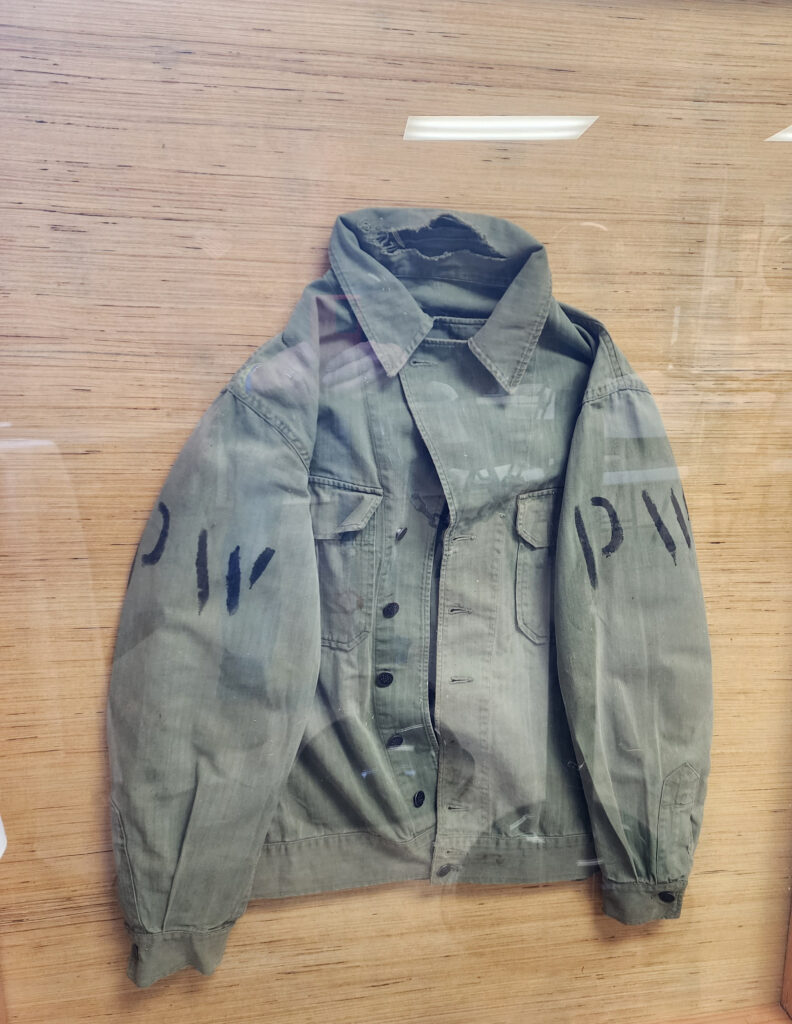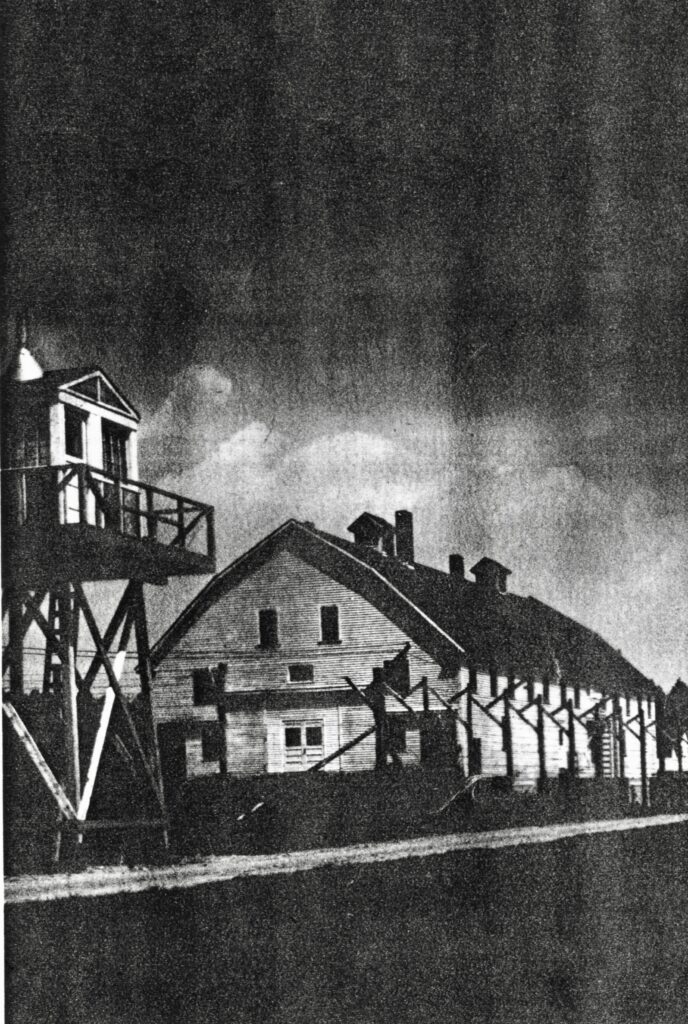
Unearthed jacket reveals glimpse into Maine POW camp during WWII
Nearly eight decades ago, two young brothers discovered two Army-style jackets strewn along the area known today as Pritham Avenue in Greenville.
The boys didn’t know the jackets, found in 1943 or 1944, belonged to German prisoners of war being held at a camp in nearby Seboomook in Somerset County. The story that unfolded has remained largely unknown to the public until now.
One of the boys donated the jacket to the Moosehead Historical Society in 2006, which Executive Director Luke Muzzy verified, but it is not on display because of its condition. The younger brother, a man now in his late 80s who wishes to remain anonymous, held onto the other jacket for most of his life until about two months ago when he donated it for others to learn about.

POW CAMP — German prisoners of war quartered at Seboomook in the 1940s were used on logging operations in Burbank Township. They are shown loading wood in this historical photograph.
The jacket, a worn green color with buttons and “PW” printed in black letters on the sleeves, was recently placed on display at the American Legion in Greenville. Although the nearby historical society could not speak to the artifact’s overall rarity, its director believes it is legitimate, and it offers a glimpse into the life of 250 prisoners in Seboomook. Larger entities like the University of Maine POW Collection and Maine Historical Society do not have such memorabilia.
German prisoners of war were used during wood operations on the northern end of Moosehead Lake when Great Northern Paper Co. contracted with the federal government in late 1943 or early 1944, according to the research of Everett Parker, the Moosehead Historical Society’s former director.
Nearly 4,000 Germans were held at camps in Maine during World War II, brought in to address a national labor shortage caused by the war. Maine’s camps were part of a broader internment of prisoners of war, mostly from Germany but also from Japan and Italy, in nearly 700 camps throughout the United States, according to the University of Maine’s POW Collection.

POW JACKET — A jacket once worn by a German prisoner of war at the Seboomook camp in the 1940s was donated to the American Legion in Greenville. It is now on display.
The digital collection features paper items and does not include artifacts such as clothing, so staff could not speak about the jacket’s rarity.
Katie Alleman, a research and administrative librarian for the Portland-based Brown Research Library, said the Maine Historical Society also does not have memorabilia such as the jacket in its collection.
Most artifacts from prisoner of war sites in Maine are from Camp Houlton, the largest of the camps. That includes historical photographs and paintings that can be viewed through the Aroostook County Historical & Art Museum of Houlton. There are also issues of a camp newsletter known first as Der Wächter and later as PW Post, which was written, edited and illustrated by prisoners, according to the university.

BARRACKS — The barracks at the Seboomook camp housed most of the 250 German prisoners of war, according to the Moosehead Historical Society. A guard tower is situated on the left.
David Slagger, a Sangerville resident and commander of American Legion Post 94 in Greenville, told the jacket donor’s story to the Bangor Daily News as it will appear on a plaque near the display case at the Legion.
“This man has had this jacket in his house since 1943 and just pulled it out and gave it to me [a few months ago],” said Slagger, who regularly visits with the donor. “I went, ‘Oh my God, that is fascinating.’”
The brothers, while walking down the street, found the jackets and gathered that they were Army or military-style, but didn’t have many other details. They brought the jackets to their father, who feared that they belonged to prisoners who had escaped and called the constable, Slagger said.
The constable called the Seboomook camp and learned that all prisoners were accounted for, giving the brothers permission to keep the jackets. They later learned the jackets were lost in laundry transit.
A truck carrying laundry from the camp must have dropped the jackets as it drove through town, though it’s unclear where it was headed, said Slagger, a former non-voting tribal member of the Maine House of Representatives, representing the Maliseet Tribe.
“The jacket looks like a repurposed Army shirt, and the POW looks like it was painted on or stenciled or something like that,” he said. “It’s definitely of the World War II era. It was obviously worn because the neck and the arm collars are in rough shape.”
Other prisoner of war branch camps were based in Augusta, Bangor, Indian Township, Presque Isle and Spencer Lake. Prisoners worked mostly on logging operations and agricultural tasks, like picking potatoes for local farmers in Aroostook County. Many were paid for their work.
Few people who venture into the Seboomook area today know its history as a prisoner of war camp, and remote locations in Maine were intentionally chosen, Parker said in his book, “Seboomook from Native Americans to POWs: A History of Northwestern Moosehead Lake.”
If prisoners escaped, as some did, they would have nowhere to turn, and it could be a deadly decision in the winter, Parker wrote. The war also called for a dramatic increase in paper production, which required more wood for the mills, he said.
“It is almost as if the veil of secrecy [in Seboomook], which was necessary during the war years, continues to this day,” he wrote. “Even decades after the camp closed and the buildings were bulldozed, it is difficult to find pictures of the facilities, or the military personnel who were stationed there.”
The jacket is on display at the American Legion, 218 Pritham Ave. in Greenville, for the public to view.